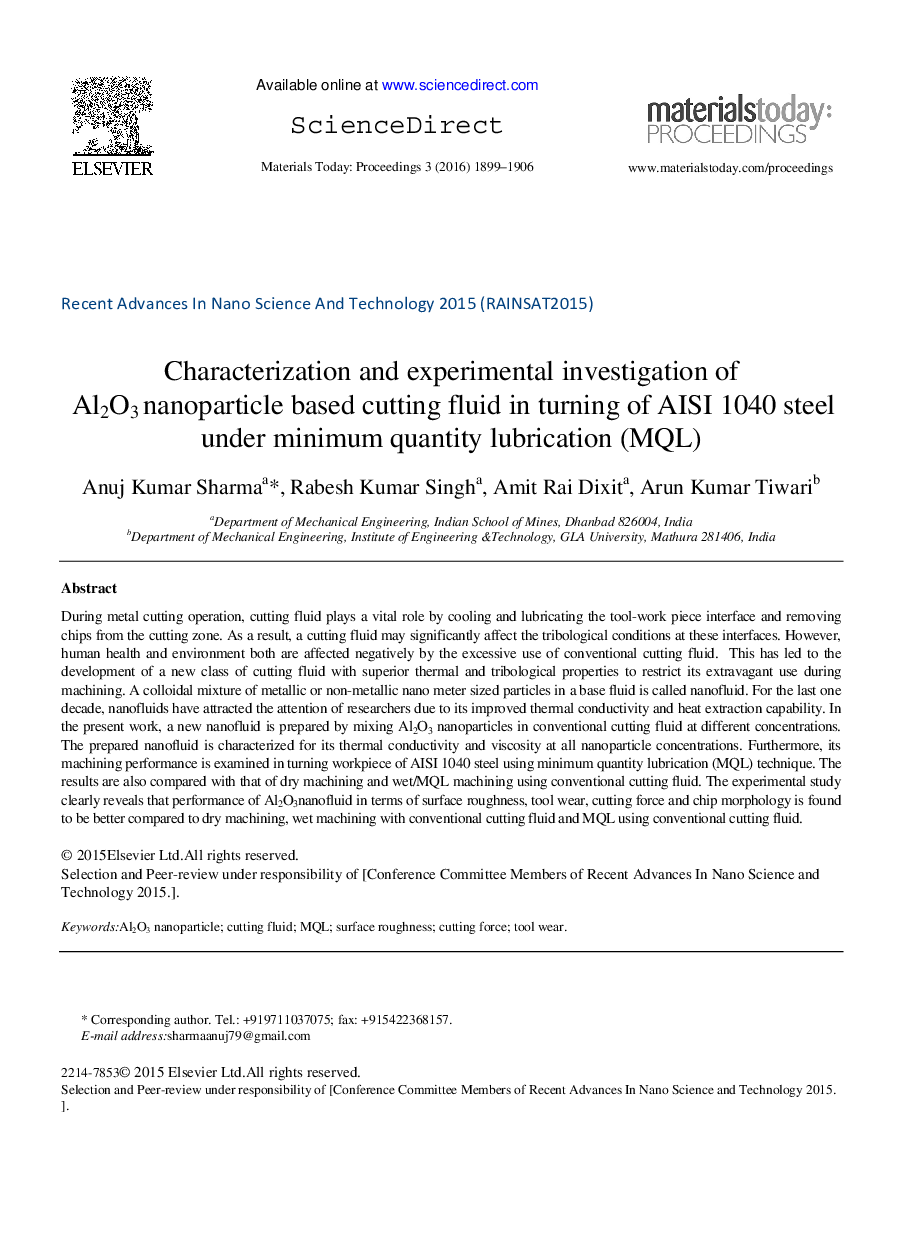| Article ID | Journal | Published Year | Pages | File Type |
|---|---|---|---|---|
| 1630857 | Materials Today: Proceedings | 2016 | 8 Pages |
During metal cutting operation, cutting fluid plays a vital role by cooling and lubricating the tool-work piece interface and removing chips from the cutting zone. As a result, a cutting fluid may significantly affect the tribological conditions at these interfaces. However, human health and environment both are affected negatively by the excessive use of conventional cutting fluid. This has led to the development of a new class of cutting fluid with superior thermal and tribological properties to restrict its extravagant use during machining. A colloidal mixture of metallic or non-metallic nano meter sized particles in a base fluid is called nanofluid. For the last one decade, nanofluids have attracted the attention of researchers due to its improved thermal conductivity and heat extraction capability. In the present work, a new nanofluid is prepared by mixing Al2O3 nanoparticles in conventional cutting fluid at different concentrations. The prepared nanofluid is characterized for its thermal conductivity and viscosity at all nanoparticle concentrations. Furthermore, its machining performance is examined in turning workpiece of AISI 1040 steel using minimum quantity lubrication (MQL) technique. The results are also compared with that of dry machining and wet/MQL machining using conventional cutting fluid. The experimental study clearly reveals that performance of Al2O3nanofluid in terms of surface roughness, tool wear, cutting force and chip morphology is found to be better compared to dry machining, wet machining with conventional cutting fluid and MQL using conventional cutting fluid.
